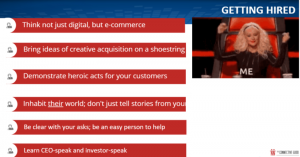Most of the employers measure employee engagement levels using traditional surveys in a hope to use the analysis of these surveys in improving employee productivity and reducing employee turnover. However, these surveys are not always reliable as they fail to tell anything of utmost importance about the employers to the employees. Organizations measure the motivation of employees while conducting these surveys.
As per general perception rule, more motivation leads to better productivity. But it is not like this. There are other factors for employee engagement as well that motivate the employees to perform better. At times, changing these parameters can be really difficult.
Leaders must understand the pitfalls of there surveys before parading the engagement to employees. The survey must clearly state what it aims to achieve and if there are any other alternatives to achieve those objectives. The surveys gauging at parameters such as workers’ pay, benefits, schedule and behavior of superiors are more successful than those asking how satisfied the employees are in their jobs.
Where Do Engagement Surveys Come From?
These traditional surveys find their roots from the surveys conducted by the US military during World War 1. These surveys were called morale surveys and were used to measure the willingness of soldiers to fight in the war. After the war, most of the experts moved into private sectors and the origin of Personnel Research Foundation applied the psychological teachings of military surveys to the private sectors.
In 1930s, these surveys were in a rise. The form of surveys indicated that the workers who were satisfied were productive. Only in 1980s it was found that there was no correlation between the two. Then, more focus was laid on engagement to measure the productivity of employees. The issue of employee burnout was brought in front through this novel development. It inferred that the emotional and physical exhaustion exaggerated the work performance.
Why Engagement Becomes a Major Problem?
It is hard to define the engagement measures because it has too many definitions floating around. You can define it as passion, pride and enthusiasm for one’s work while some define it as the willingness and ability to contribute to a company’s success. This becomes a measure problem when employers wish to measure the engagement through one parameter, but the surveys ask questions pertaining to different parameters.
Another factor that might cause friction of mistrust of employees in these surveys is that they believe the management would not pay heed to their responses. Most of the employees don’t bother to fill these forms and many believe that they are useless. If the employees don’t see concrete changes after the last survey, they will become distrustful and alienated if HR keeps on piling new ones on them.
Most employers believe that the surveys show engagements reflecting how hard the employees are working. But employee engagement and productivity are not mutually connected, rather they are affected by different factors, the calculation of which is far beyond the scope of survey.
What should be done instead?
You must ask yourself the objective of the survey before distributing it to the employees. If the survey is based on job satisfaction/policies in office/pay of the employees, then you should ask them directly. If you wish to measure their job performance, then these surveys should have the questions from the perspective of employees.
It would be better to target these surveys to the managers as they will have better grounds to comment on the job performance of the employees. Meaningful conversations and open-ended questions with managers and employees can help the leaders to gain a more nuanced understanding of employee as compared to the recycles surveys with typical questions.
You can choose to hire best employee branding agencies to help you increase the employee engagement index and help you deliver value to your employees. Employer branding agencies can set up an inline process that can help you enroll more employees in the survey to achieve better outcomes.
Over to You
Engagement rates gradually increase with effective measures and then get stabilized. The employees who are motivated stay that way and those who don’t have motivation, don’t engage more even with changed structures and policies.
These surveys are good indicators of employee engagement when you carry them out well. Employee often find it really difficult to self-diagnose. The leaders must step up and become supportive of the workers. They must work to improve the factors that hinder the engagement as one of their jobs is to manage the employees well every day.
Business & Finance Articles on Business 2 Community
(15)



